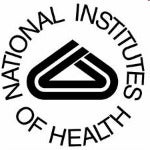Affiliated Hospitals
The clinical experience of the Georgetown residency program provides a unique balance between our tertiary referral center and community hospitals in the metropolitan area, as well as an outpatient and clinical research exposures.
Medstar Georgetown University Hospital
Georgetown University Hospital, now part of the Medstar system, was founded in 1898 to promote health through education, research and patient care. This mission has been shaped by and reflects Georgetown’s Catholic, Jesuit identity and heritage. With a 609-licensed bed hospital and 1,100 physicians, Georgetown University Hospital’s clinical services represent one of the largest healthcare delivery networks in the area. Georgetown University Hospital is the academic flagship of Medstar Health and is “home base” for our pediatric residency program.
INOVA Fairfax Hospital

A large community hospital of approximately 656 beds, INOVA Fairfax Hospital has a pediatric inpatient service admitting about 6,000 patients per year. In addition, the emergency services at the hospital see about 23,000 urgent care cases in the ER annually. The experience is supervised by board certified pediatric emergency physicians, and covers the complete spectrum of pediatric emergency and trauma care. Georgetown residents spend a month-long rotation on the in-patient team during their first year and another month as second year residents in the emergency room.
Virginia Hospital Center

Virginia Hospital Center is smaller community hospital which draws from the local area directly across the Potomac River from Georgetown, including a large immigrant population. The hospital has a busy obstetric service, delivering more than 3,300 babies a year, and providing our residents with robust experience in neonatal resuscitation and newborn care. Residents spend one month here during their first year and two months during their second year, supervised by board certified pediatric hospitalists. A senior resident staffs emergency room consults and manages the pediatric floor; while a first year resident attends deliveries and C-sections, examines newborns and manages the newborn nursery.
Childrens National Medical Center

Located in Washington, DC, this is a big multidisciplinary center with more than 50 pediatric sub-specialties.Our second year residents are part of the inpatient cardiology team during a 1 month rotation. Cardiology is an associated division of the Children’s National Heart Institute, an international leader in comprehensive cardiac care for infants, children, and adults. The Heart Institute coordinates all aspects of care for patients with cardiac conditions, from fetuses and children with heart murmurs to adults with congenital heart disease.
National Institutes of Health- Eunice Kennedy Shriver National Institute of Child Health and Human Development

The NICHD was established by President John F. Kennedy, with the support of congress, in 1962 to study the “complex process of human development from conception to old age.” First year residents rotate at the NIH during their month of Neurology and Development, where they spend time working with world-renowned physicians at the genetics clinic. Through this experience, residents are exposed to patients with both rare and common genetic diseases, as well as learning current methods for diagnosis and management. The experience is supervised by several geneticists of international stature. Residents also have the option to spend additional elective time at NICHD to study Genetics or Endocrinology.
Shady Grove Adventist Hospital

Shady Grove is Montgomery County’s first and most experienced Pediatric Emergency Department, which is open 24 hours a day, 7 days a week, and encounters as many as 21,000 pediatric emergency care patients annually. This Pediatric Emergency Department is staffed by board-certified pediatric emergency physicians, pediatric nurses, and specialty pediatric medical professionals, including radiologists, anesthesiologists, and surgeons. Residents spend two months in this busy emergency care center during their third year of training, gaining experience in community-style emergency medicine, procedural skills, and critical care.
